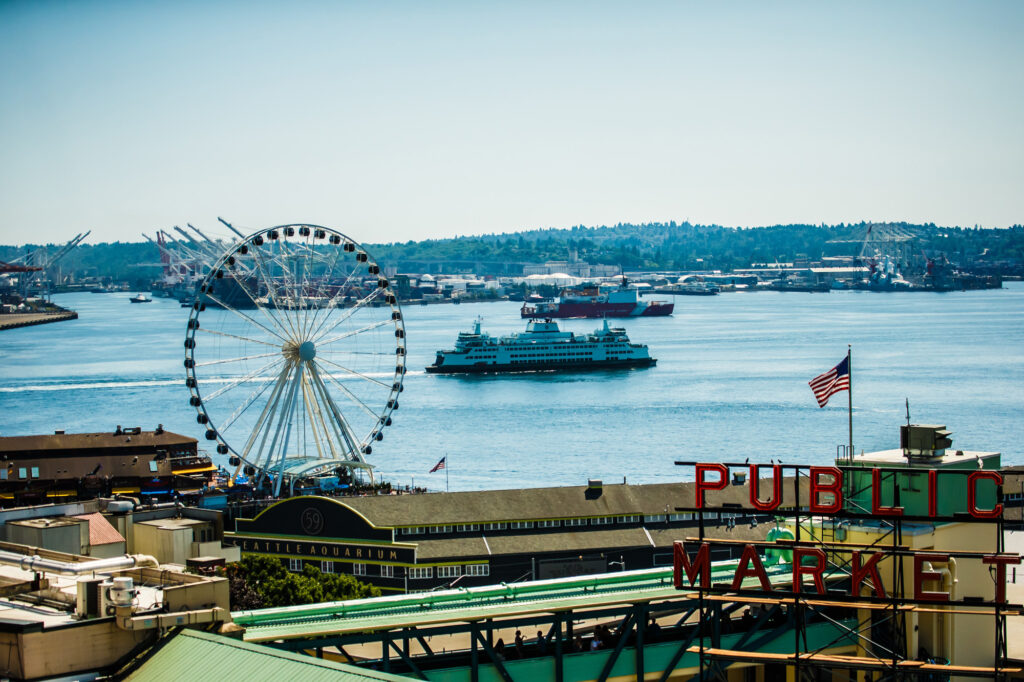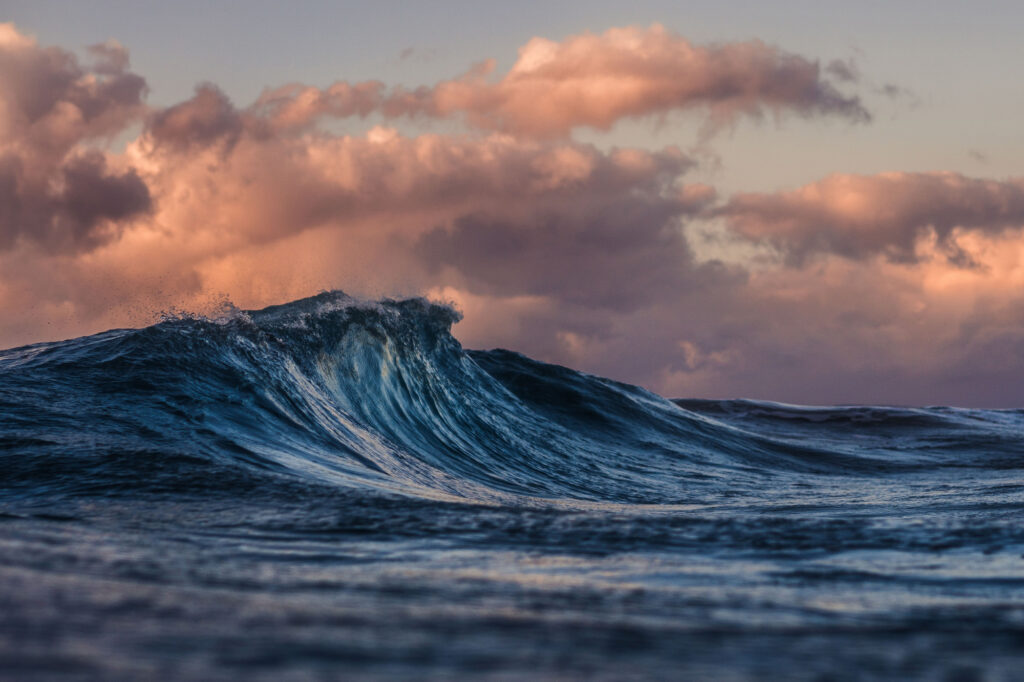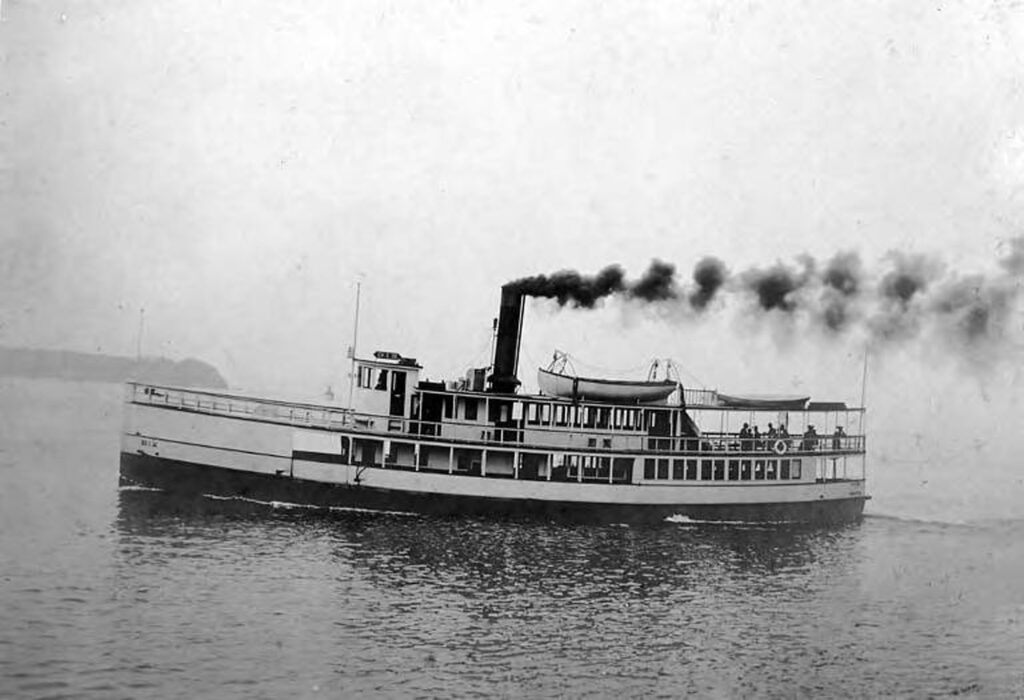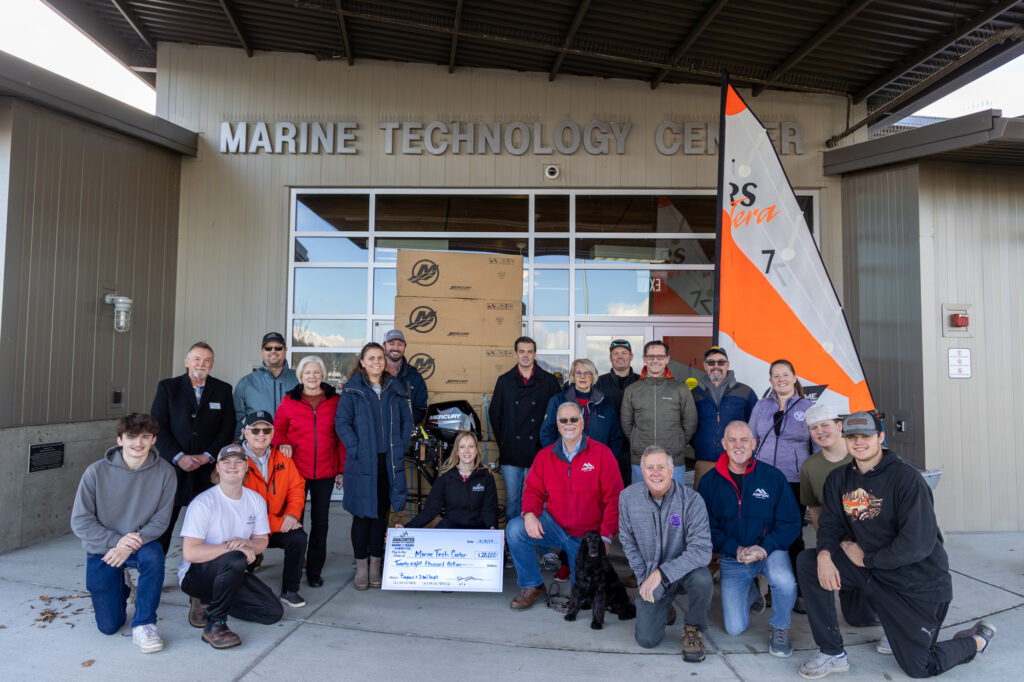
[ enjoy the show ]
Seattle Boat Show Returns Next Month Featuring Extended Seminar Schedule
It’s a new year, with new expectations and new horizons to explore. What better way to kick off 2024 than a return to the full-strength iteration of the Seattle Boat Show? Coming to town at the indoor Lumen Field Event Center and in the outdoor environs of Bell Harbor Marina, the nine-day event will feature hundreds of new vessels to see up close.
For the first time since the pandemic, the Seattle Boat Show will return to its previous format of using three separate stages for the in-person fishing and boating seminars. In total, the show will offer a staggering 124 seminars to choose from—a 43 percent increase from the 2023 seminar program. Starting with the Friday Opening Night “Uncorked” wine-tasting event at Lumen Field Event Center on February 2, the show will run through Saturday, February 10, and include some special events in between.
For instance, Monday, February 5, will be “Women’s Day” at the show, when all women attendees can attend for free with a reservation of an online ticket. Participants can see boating presentations and free seminars presented by some of the most experienced and talented women in the maritime industry. In addition, the Boat Show is creating a new sailing panel just for Women’s Day, featuring local women sailors who will take part in a Q&A session about getting started in boating. (Find more info in this month’s feature beginning on page 47.) Those interested in boating career opportunities can also attend the Marine Industry Career Fair on February 5, from 9 to 11 a.m. This fair will include exhibitors from a wide range of employers in the recreational boating business, such as boat builders, yacht outfitters, boat yards, and many others.
One of the most popular features of the event is Boat Show University (BSU), which offers dozens of in-depth boating courses that can be taken in by purchasing either a single-day course or a 9-Day Seminar Package. Some of this year’s BSU topics will cover boating safety, fishing techniques, navigation instruction, cruising tips, and the latest technology innovations.
The single-day BSU courses include a two-hour course, a single-day admission to the Boat Show and—new this year—a complimentary beer or wine at the new BSU experts’ reception held every evening from 4 to 6 p.m. in the Seahawks Tunnel Club. Those who wish to purchase a 9-Day Seminar Package will have admission to every show day, every BSU course, a complimentary drink at each expert reception, and online access to the recorded BSU courses until May 1, 2024. An expert guest, sponsored by the Waggoner Cruising Guide, will attend each of the evening receptions, which will vary in theme.
Other Boat Show features include “Twofer Tuesday” ticket specials, a “Dogs on Deck Thursday” event allowing pooches to come aboard for the day, a “Sales & Ales” craft beer night on February 9, a Kids Aqua Zone area full of family-friendly activities, and a raffle to win 2024 season tickets for the Seattle Seahawks at the Be Whale Wise/Soundwatch booth.
The Seattle Boat Show is the largest such event on the West Coast. A free shuttle bus will be available to transport attendees between the Lumen Field Event Center and Bell Harbor Marina for each day of the show. For more information about ticketing options, exhibitors, a list of BSU seminars, and show hours during the week-long event, please visit: seattleboatshow.com.

[ preserving our shores ]
Port of Seattle to Clean Up Its Act with Environmental Legacy Fund
The shores of Seattle’s working waterfront are likely to look cleaner and healthier over the next decade thanks to a new Environmental Legacy Fund set up by the Port of Seattle last November. The fund will be an account into which the Port will deposit a portion of property taxes that will be dedicated for cleanup of historical industrial pollution on its properties.
The Environmental Legacy Fund will invest in research, investigation, design, and cleanup that could cost more than $100 million over the next decade. Ultimately, the Port said, some of the remediation costs may be covered by polluters and responsible parties, state grants, and insurance.
At the outset, the Port will seed this new fund with a $30 million investment of already collected tax levy dollars, which will be used to pay for 18 of the Port’s active environmental remediation projects to improve water quality, support salmon and marine mammal recovery, and restore habitat. Many of these decades-long projects are already improving the quality of life for residents through safer shorelines for recreation, boating, and fishing.
“By dedicating resources now, we can offer taxpayers predictability and stability, while still meeting future responsibilities,” said Port of Seattle Commissioner Ryan Calkins.
One such effort that will be helped by the fund will be the continuing remediation of a former barrel-cleaning and auto-wrecking facility near Seattle-Tacoma International Airport. Between 2007 and 2020, the Port worked with the Washington State Department of Ecology to remove contaminated soil and sediment to improve groundwater, protect wildlife and local residential properties, and restore a wetland in the Miller Creek watershed.
Another Port-owned parcel of waterfront property in the South Park neighborhood used to be the home of an asphalt shingle manufacturing operation. After more than two decades of cleanup and restoration work, the Port created what is now known as the Duwamish River “People’s Park,” 14 acres of shoreline habitat for Chinook salmon and public shoreline access. In the first year of monitoring, researchers found more than 7,300 juvenile salmon on the site, including 250 juvenile native Chinook salmon and extensive, healthy marsh vegetation.
One of the primary future targets of these remediation efforts by the Port will be Terminal 25 South cargo facility, which is located on Harbor Island, adjacent to the heavily industrialized east waterway section of the Duwamish Waterway. In 2022, the Port signed an order with the U.S. Environmental Protection Agency to conduct a cleanup of the site and the creation of a restored estuarian and riparian habitat area for fish and wildlife in a marine-freshwater transition zone. The Terminal 25 South site, the Port said, is expected to provide conservation credits for impacts to special status salmonid species listed under the Endangered Species Act. The project would re-establish between nine and 10 acres of riparian, emergent marsh, mudflat, and sub-tidal habitat.
To date, the Port of Seattle has already completed several nationally recognized successes in habitat restoration over the years. Some notable examples include:
- Restoration of more than 31 acres of fish and wildlife habitat at 16 sites throughout the Duwamish River, Elliott Bay, Puget Sound, and Lake Washington Ship Canal.
- Improved light penetration in shallow water areas by replacing solid piers with grated structures and removing overwater structures and dock pilings.
- Removal of in-water barriers to migrating juvenile fish, including a derelict ferry and sunken marina.
- Replacement of more than 10,000 creosote-treated wooden pilings with fewer numbers of concrete and steel pilings.
- Cleanup of more than 100,000 tons of contaminated sediments in Elliott Bay and the Duwamish Waterway, including the dredging of the East Waterway.
- Creation and enhancement of 177 acres of wetland, including 350,000 new plantings.
- Enhancement of two miles of stream habitat.
For more information on the Environmental Legacy Fund, and on forthcoming projects, go to: portofseattle.org.

[ building up the blue ]
Maritime Blue Wins Federal Grant to ‘Build to Scale’ Blue Economy
Washington Maritime Blue got a significant shot in the arm in November when it was chosen for a $1.75 million federal “Build to Scale” grant from the U.S. Department of Commerce to support maritime and ocean-related businesses, known collectively as the “Blue Economy.”
Washington Maritime Blue, an independent, nonprofit partnership between maritime companies, the public sector, and research and training organizations, said it will use the grant to scale up its efforts to accelerate the Pacific Northwest’s path towards “an equitable, sustainable, and profitable maritime and ocean sector.”
The Build to Scale grants, selected by Commerce’s Economic Development Administration, were awarded in 2023 to 60 organizations across the country, located in 36 states, the District of Columbia, and Puerto Rico. Maritime Blue was the only such organization in Washington state to be given the EDA grant. The federal grants, which total $53 million nationwide, are given in support of various innovative technology entrepreneurs in the maritime industry and will be matched by another $55 million in funding to come from an array of public/private sources.
“This achievement speaks to the strength of our cluster members and support partners and the projects they are invested in supporting,” said Joshua Berger, founder and CEO of Washington Maritime Blue.
The current plan for Maritime Blue is to use the federal and matching funds to bring together its more than 100 active members to develop new market opportunities, technology development, collaboration, and entrepreneurship. The partnership currently includes two incubators and two accelerator programs dedicated to data analysis, impact assessment, and new market engagement in the Blue Economy sector.
Awarding of the grant is expected to boost Maritime Blue’s Blue Wind initiative, launched in October 2023, with the goal of expanding sustainable employment opportunities supporting the expected growth of offshore wind projects along the West Coast. These sectors will involve shipbuilding, maritime operations, technology research, wind turbine and components manufacturing, and materials transportation to offshore sites.
The offshore wind industry, which Berger described as “one of the largest maritime opportunities since the advent of the shipping container,” is projected to grow into a $70 billion industry in the U.S. in the next decade, according to a report by an independent industry group called the Special Initiative on Offshore Wind. The report said it expects that private supply-chain investments in offshore wind projects totaling $109 billion will be made by 2030, adding that more than 65 percent of the nation’s wind energy will eventually be generated from floating offshore wind turbines.
Blue Wind, along with other similar projects in California and Oregon, is being considered to help meet President Biden’s ambitious goals for the expansion of offshore wind power capacity to 30 gigawatts by 2030. Washington State, however, has yet to define a process for considering offshore wind generation off its coast.
“Offshore wind is another generational shift bringing a truly all-encompassing new industry to this country like the automobile, aerospace, and software industries,” said Sloane Perras, vice president, Foss Offshore Wind, a partner in the Blue Wind initiative. “Offshore wind generates high-paying blue-collar and white-collar jobs throughout the United States.”
For more information on Washington Maritime Blue, and its projects, please visit: maritimeblue.org.

[ secrets of the sea ]
SS Dix Wreck Identified (Again) By Rockfish Team
The infamous wreck of the passenger steamer SS Dix, which took the lives of nearly 40 people near Alki Point more than a century ago, may finally be identified by local marine salvage company Rockfish, Inc. While Rockfish was not the first to discover evidence of a sunken ship at the wreck site, it may be the first to confirm its provenance via its latest search efforts.
The location of what looks to be the wreck off Duwamish Head was initially discovered in 2011 by a team of local underwater explorers. However, after analysis of the site was made using submersibles made by Everett-based OceanGate, the team determined that the sonar images they had recorded on the bottom of Puget Sound did not line up with photographs of the SS Dix, so the mystery of the doomed vessel remained seemingly unsolved.
Twelve years later, Rockfish CEO Jeff Hummel said he may now have proof that the
same sunken vessel is indeed the last resting place of the Dix. Since 2011, the site has become a well-known yet officially unidentified wreck that Rockfish would often dive on to test out its latest underwater equipment. After analyzing the wreck with a nonprofit group called the Northwest Shipwreck Alliance (NSA) over several years, Hummel recently concluded that the OceanGate team in 2011 had been analyzing the sonar images from the wrong vantage point.
“What they thought was the stern was actually the bow,” Hummel said to King-5 TV in November 2023. “When you take the image and flip it around, and then you do the comparison of the features from a photograph to what we see on the sonar, we get this perfect alignment of all the different features on the wreck.”
Looking at more-recent sonar images from Rockfish’s remotely operated underwater vehicles, NSA said the 102-foot-long wreck appears to be sitting upright on the bottom about 600 feet down.
The wreck itself occurred on the evening of November 18, 1906, when the SS Dix—then a new member of Seattle’s Mosquito Fleet of small wooden boats that sent passengers back and forth across Puget Sound—was headed west from Seattle to Port Blakley on Bainbridge Island with an estimated 77 people on board. While en route, the 130-ton Dix collided with the much larger, 1,071-ton three-masted steam schooner SS Jeanie heading south toward Tacoma with a heavy load of iron ore. The collision caused the smaller Dix to heel violently to port, toppling many of its upper-deck passengers into the Sound and flooding the hull.
While the only lightly damaged Jeanie and other nearby vessels made attempts to rescue people from the frigid waters, the Dix went to the bottom in a matter of minutes, taking with it at least 39 people, most of whom were trapped within the lower deck. After 117 years, the Dix disaster still represents the single greatest loss of life on Puget Sound.
Today, Hummel said Rockfish and NSA are trying to negotiate with government agencies to help protect the wreck permanently, adding that they have no plans to recover any artifacts from the Dix. Because no bodies were ever recovered from the wreck, NSA said the Dix should be left alone. “We believe the best way to protect and honor it is to tell its story and leave the wreck where it lies,” read an NSA statement. “It was and still is their gravesite, and we will be honoring that.”
In November 2022, Rockfish and NSA made an earlier notable discovery of the SS Pacific wreck off Neah Bay on the Washington coast, earning salvage rights to the site. The sinking of the SS Pacific is the worst maritime catastrophe in the Pacific Northwest, claiming an estimated 375 lives.
For more details on the Dix discovery, on the Northwest Shipwreck Alliance, visit: northwestshipwreckalliance.org.

[ giving back to the community ]
Anacortes Chamber of Commerce Marine Trades Committee Donates $28K For Youth Boating Nonprofits
Last month, the Marine Trades Committee of the Anacortes Chamber of Commerce donated a total of $28,000 to nonprofit groups in support of youth boating programs across Skagit County.
Funds for the Chamber support came from the proceeds collected at the 2023 Anacorter Yacht & Boat Show held last May. The donation represents the largest contribution the Chamber has made in support of boating industry initiatives and marine workforce development in Anacortes and Skagit County.
Under the Chamber agreement, the Anacortes Waterfront Alliance will receive $18,000 to purchase three new Tera sailboats to be used in youth-oriented sailing classes. The boats will also be added to group’s community-access rental fleet and to the Anacortes Middle School racing team. The new funds will enable the city to attract “more ‘future boaters of America,’ as I call them, on the water,” said Mary Trester, executive director of the Anacortes Waterfront Alliance.
The remaining $10,000 of the donation will go to Skagit Valley College’s Marine Technology program to buy outboard motors for training purposes. In addition, Shawn Ottenbreit, owner of Salish Boat Co., donated another $1,000 to the college program and allowed it to purchase seven outboard motors at cost, totaling two more engines than the donation would have covered at retail prices. To celebrate the investment, an event was held on December 8 at Skagit Valley College in which the newly purchased Tera sailing vessels and outboards were displayed in front of the school buildings.
“The marine trades industry stands as one of the largest economic drivers in Anacortes, immensely vital, and deeply cherished,” added Jesica Kiser, president and CEO of the Anacortes Chamber of Commerce. “We are thrilled to reinvest back into this industry.”
The annual Anacortes Yacht & Boat Show was created in 2018, jointly organized by the Chamber and Northwest Marine Trade Association, and features hundreds of new and brokerage boats on display at the Cap Sante Marina and other regional boatyards. In recent years, the show has partnered with a national traveling event called Trawlerfest, which offers several educational sessions, seminars, and equipment demonstrations for cruising enthusiasts. This year’s Anacortes Yacht & Boat Show/Trawlerfest event will take place May 16-18 at Cap Sante Marina.
For more details on the Anacortes Chamber, go to: anacortes.org; and be sure to bookmark anacortesboatandyachtshow.com in anticipation of the spring show.